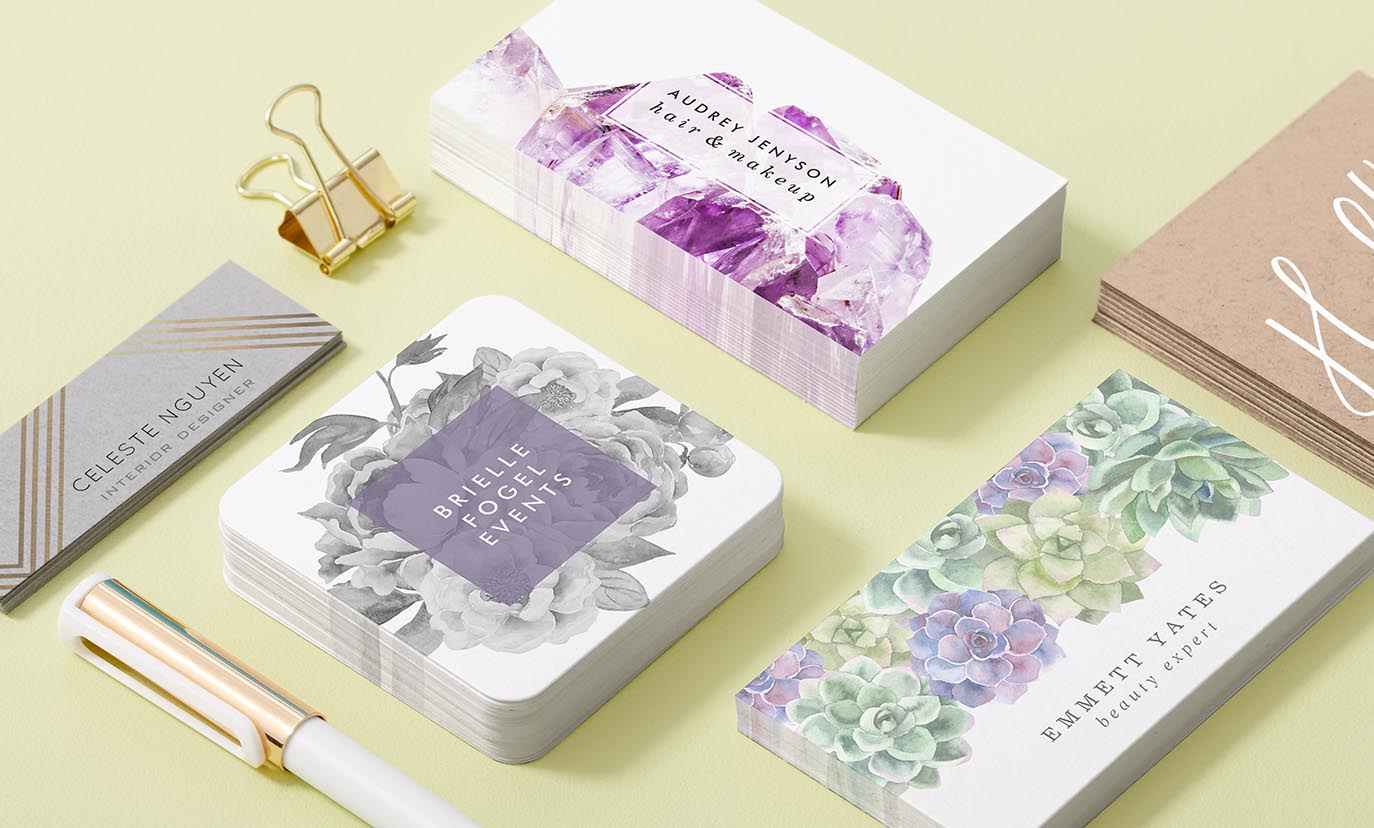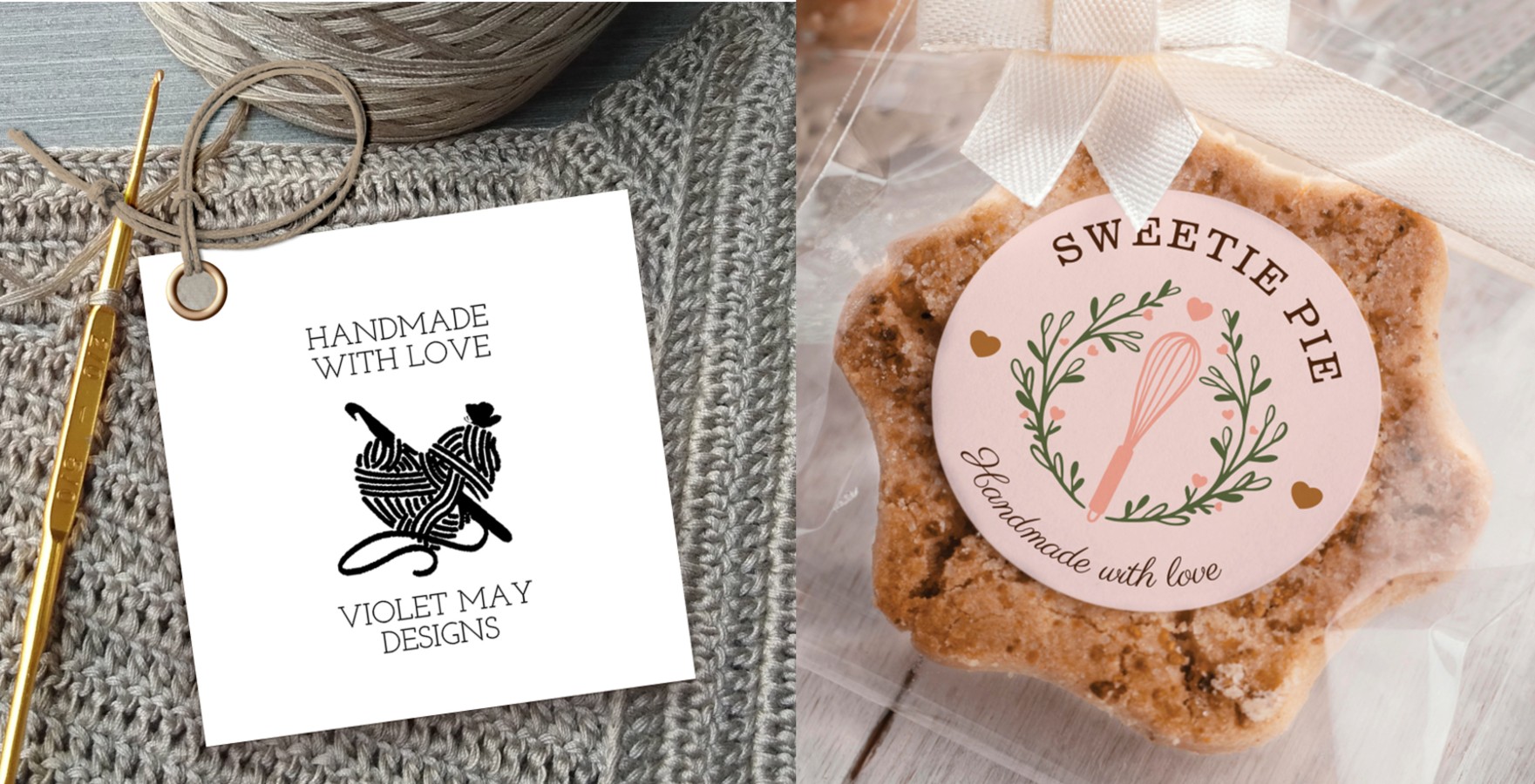That heading at the top of this article may raise some eyebrows – is there such a thing as an “innovative” QR code? Certainly, the concept of the QR code – or ‘Quick Response’ code – is innovative: invented in 1994, these black-and-white boxes, once scanned with a smartphone or tablet, can direct the user to a webpage of the creator’s choice. Beyond that, however, can they be augmented any further, or are they used any differently to how they were a few years ago?
Well, we’re happy to report that there’s more than one way to scan a card. QR codes were already easy and convenient to use, and sped up the process of providing contact information for any business person that used them. However, in 2023, most businesses are linking QR codes to a particular action or prompt: this makes the QR codes even more useful, and yes, innovative!
To enhance the interactivity of your business cards (and of your QR code window decals, stickers, and coasters), then, read our top 15 recommendations for QR code usage!
1. Websites and Social Media
Before we elaborate on the more adventurous options, it’s important to note that linking to websites or social media accounts, while conventional, is still a perfectly valid use of a QR code. You can experiment with how you use these, though: link to your most popular social network if you want to impress clients and investors, or direct users to your least popular account if you want to grow the channel. And, if you want to cover all your bases, consider grouping your pages together via Linktree, and then make that your QR code. By doing so, you can effectively make your QR business card target multiple URLs.
2. Google Maps Locations
Is your business tucked away at the back of a dark alleyway, buried in an upcoming development, or sandwiched between two floors in a high-rise building? Aside from the questionable zoning issues here, you may be experiencing other problems just getting people to your location. With a QR code that links to pre-set map coordinates, then, you can easily guide prospective customers to your premises. Although there are several different web mapping platforms available, Google Maps is a fan favorite.
3. Email Templates
If your email marketing strategy doesn’t seem to be attracting as much attention as you’d like, then perhaps you need to make the process of contacting your company even more straightforward. Instead of expecting your clientele to find your website, locate the ‘Contact Us’ button or page, and set up an appropriate email template, link your QR code to a pre-filled response form, streamlining the process considerably. There may be some coding involved in preparing such a dynamic QR business card, but given that 80% of companies acquire or retain customers via email communication, your input is sure to – quite literally – pay dividends.
4. Recipe Showcases
Do you own a bakery, culinary arts school, or even a foodie Instagram account? Then you’ll know that the hard work isn’t done in Zazzle’s design tool; it’s happening in the kitchen. So, if you’ve developed a dish that you’re particularly proud of, and you’d like to share it with your customers, clients, or followers, then a QR code sending them directly to your recipe will go down a treat. To avoid having to reprint or update your business cards in the future, however, you should use a signature dish; something that will always be associated with your brand, and that won’t have to be replaced at a later date.
5. Menu Previews
If our previous suggestion left you hungry for more eatery-related shortcuts, then here’s a second helping. Now that you’ve wooed your clients with an introduction to your best recipes and secret ingredients, it’s time to lure them into your bar, restaurant, or café for the meal – sorry, real – deal. Hand out a QR code business card that allows users to download your menu, and they’ll practically – or virtually, perhaps – smell the aroma of home-baked goods wafting from your URL. QR codes can even be used on your coasters and drinkware, linking to a page on your website that outlines upcoming events.
6. Price Lists
Be clear and transparent about the cost of your products and appointments, then, and attach a price list to your business card and other marketing materials via QR code. For any business that has set prices for different services, such as a hair salon, then this should be easy to implement and unlikely to vary too much. You can even link each item to a purchase page, if appropriate.
7. Appointment Scheduling
For clinics, salons, therapists, and legal advisors, getting a person to book an appointment (and thereby adding their details to your system, allowing for further interactions) is a key juncture in the customer journey. Negotiating the right time and date over phone and email can be tedious, however, and can result in a lot of back-and-forth communication. Why not link your QR code to an appointment diary, then, and with your availability noted, and allow your prospects to assign their own slots? You can always follow up with an email or phone call to add a personal touch.
8. Classes and Training
This is similar to the previous suggestion but works best for gyms, fitness studios, or anywhere that offers classes and/or training, like a night school. Introduce any interested candidates to your prospectus with a QR code that sends them directly to the timetable; or, alternatively, recruit new members and students immediately by attaching a full-on registration link to your business card. You could even add a QR code to a high-visibility item, like a banner or poster – or of your classrooms and equipment, if you’re an academic institution.
9. Feedback Surveys
Perhaps this QR usage should have been left until the end, so that we can insert our very own QR code, asking for your thoughts on this article! Many QR codes now incorporate a “call to action” or CTA: they encourage the user to take a certain action, such as making a reservation, placing an order, or, in this case, completing a survey. For real-life retailers, you can include a business card with the QR code in the customer’s bag as they leave with their purchase; with online retailers, you can simply package it up with the rest of the shipment. When scanned, the customer can instantly comment on their experience with your business, or leave an online product review for other customers to see. What a 5-star idea!
10. Shopping Recommendations
Whether you’re a brick-and-mortar store or an e-commerce company (why, even if you’re an online marketplace, like ourselves), then you could upload a QR code that links to a list of recommended items or on-sale products. Adding these bonuses to your goods and packages can create a better shopping experience: if you run a clothing store, say, and add QR-coded stickers to the price tags, you can direct shoppers to a styling video or related product suggestions. This is a neat way of introducing your clients to complementary products or outfit ideas, without taking up too much room in your store or overloading your customers with URLs!
11. Promotions
Perhaps you’ve already attempted a QR code campaign but didn’t see an increase in customer engagement; how do you encourage people to scan your code? One of the fastest ways to guarantee that your QR codes will be utilized is to link them to a unique discount or promo code. In an age where people tend to choose experiences over products, you need to provide a fun, easy way for them to feel involved; by granting them access to an otherwise unavailable discount or freebie, they’ll feel like they’re part of an exclusive club. Including promotions on your QR codes will considerably boost the value of your encoded business cards.
12. Real Estate
No matter how impressive your latest showhouse is, if people don’t get to see it, then that’s your, ahem, lot. So use a QR code to send interested parties on a virtual tour of the property, or at least link to your best photographs so that they can judge the listing for themselves. You could create business cards with this QR code idea, but we think that signage, posted outside the plot, is an ideal way to attract attention: well-heeled bypassers can scan the code to see the inside of the house. You could also attach it to any brochures or pamphlets you hand out at viewings!
13. Digital Business Cards
While digital business cards have become increasingly popular over the last few years, that doesn’t mean they’ve completely replaced the physical card. Indeed, the two can coexist: it’s possible to generate a QR code for a real-life card or sticker that forwards users to the digital incarnation of your card. Even the largest business cards – 3.5″ x 2.5″ on Zazzle – can’t accommodate every piece of information you want to convey. In that case, give the physical card more value by connecting it to its digital counterpart (and all of its accompanying videos, links, and images).
14. Portfolios
If your blog by itself hasn’t garnered enough traffic, then perhaps it’s time to take it on the road with an interactive photo or sticker. People can scan the QR code and see a sample of your work, and can then decide whether to read more. This would work particularly well for job interviews in journalism, academia, content marketing, and other creative industries, as you’re effectively carrying around your oeuvre. Meanwhile, musicians can use QR codes to invite people to their Soundcloud account, and artists can host visitors in their online gallery.
15. You?
We’ve saved the best advice for last: why not link the QR code to your biography? Now, we don’t mean that you should reference a PDF of your memoirs; instead, liven things up by providing some fresh details about your experiences, interests, and ambitions. Use a QR code to tell your story and share it with anyone lucky enough to be holding your business card. Hiding such interesting information within a small black and white barcode is, as far as we’re concerned, another innovative use of the
Adding a QR Code to Your Business Card
Now that we’ve sold you on the merits of unique QR codes, it’s time to present you with one more innovation: our state-of-the-art design tool. Whether you want to produce a custom business card from scratch or experiment with our existing business card designs, the steps are much the same. Follow the instructions outlined below to begin advertising your portfolio, inviting reviews, and uploading price lists!
- Go to our main business card page (or to our QR business cards specifically). Click on the thumbnail of a design you like to be taken to the product page. This photographer’s business card is one example, and it’s the first result on this page.

- Once you’re on the product page, you can adjust the look of your card by using the ‘Size,’ ‘Corner,’ and ‘Paper’ menus. To add your QR code, however, click on ‘Personalize’ and then on ‘Edit Using Design Tool.’

- Now that you’re in the design tool – indicated by the blue borders on your screen, along with the ‘Share’ and ‘Done’ buttons – hover over the QR code. Click on it, and a text box will appear, prompting you to add the relevant URL. Insert that link and hit ‘OK.’

- Continue making changes to your business card and click on the ‘Done’ button when you’re ready to finalize your order for purchase. Our business cards are available in packs of 100, and you’re eligible for a quantity discount when you order more than 2 packs. Adjust the figure in the ‘Qty’ box to make sure you take advantage of our competitive prices, and then click on ‘Add to Cart’ to prepare your order.

As we’ve proved in the article above, business cards still have plenty of life in them, despite being hundreds of years old! QR codes aren’t the only way to make clever use of your cards, either, though as you’ll discover in “Coming Up with Creative Business Cards” and “4 Unique Uses for Business Cards”! Are you a freelancer, entrepreneur, or CEO that uses QR codes on your business cards, or have you designed a brand-new type of business card?! Let us know what you link in the comments below!

Eoin is a Content Specialist at Zazzle in Cork. He’s recently bought a house with his fiancée, and thus most of his time these days is spent trying to keep the walls from caving in and the wolves from the door. Still, he’s always open to book, game, and movie recommendations, so if you have some, let him know: he’ll add them to a very, very long list.













